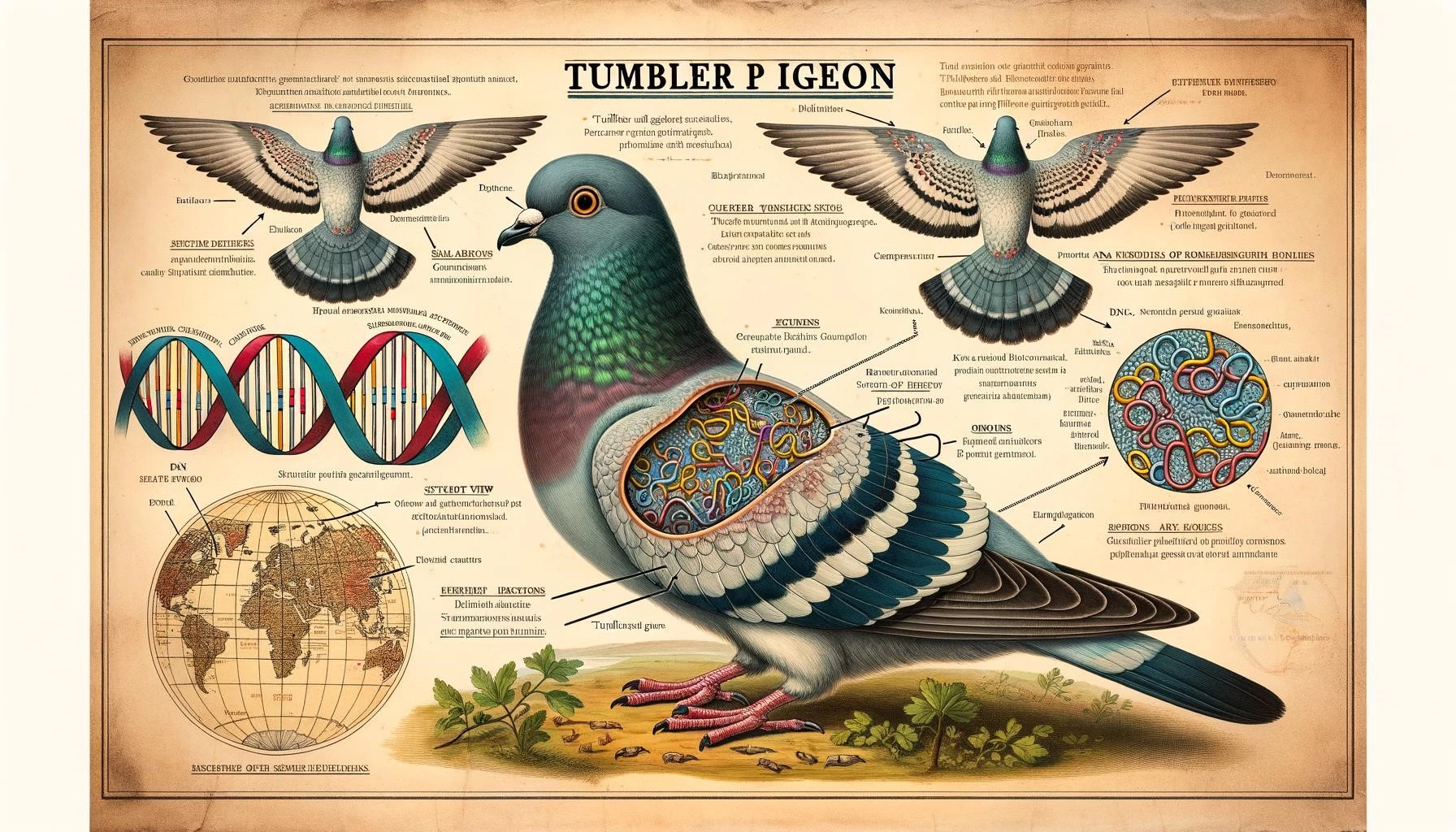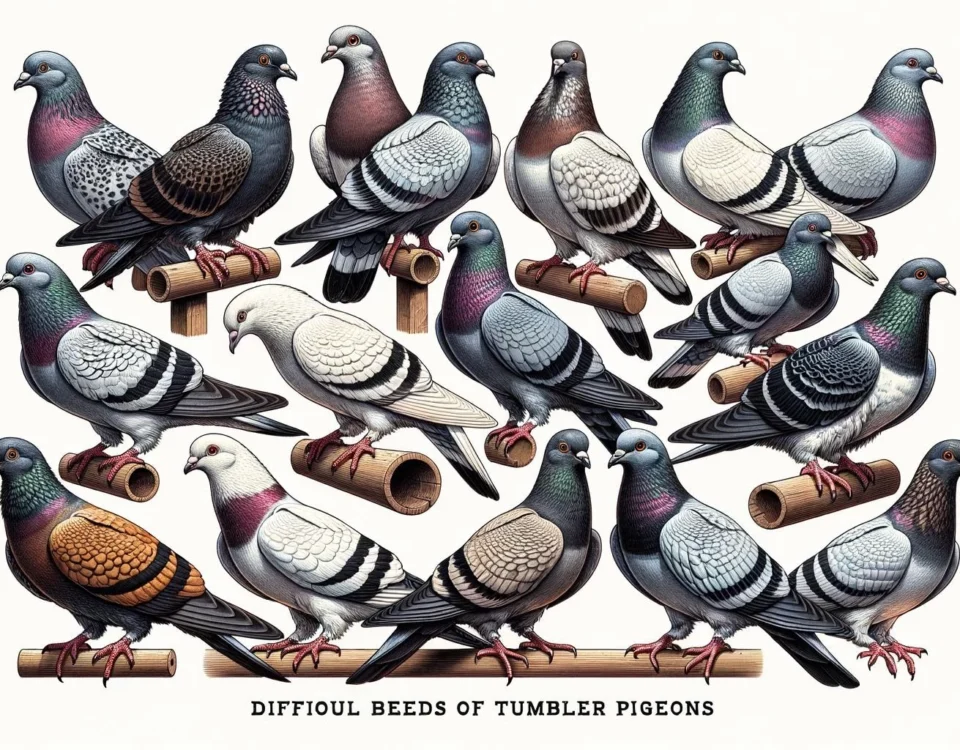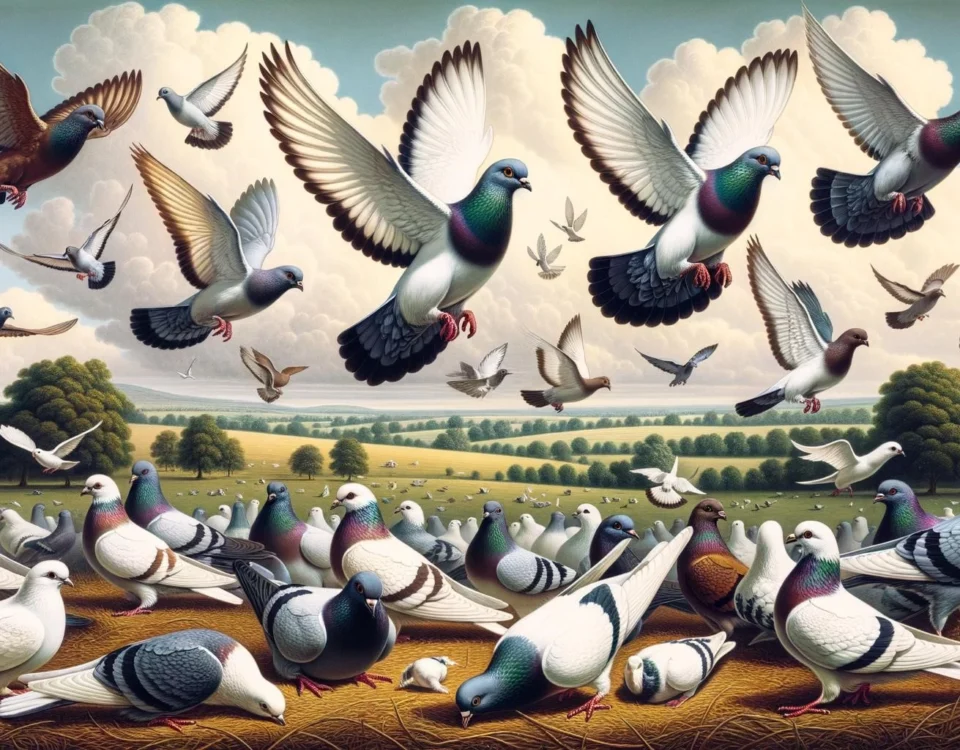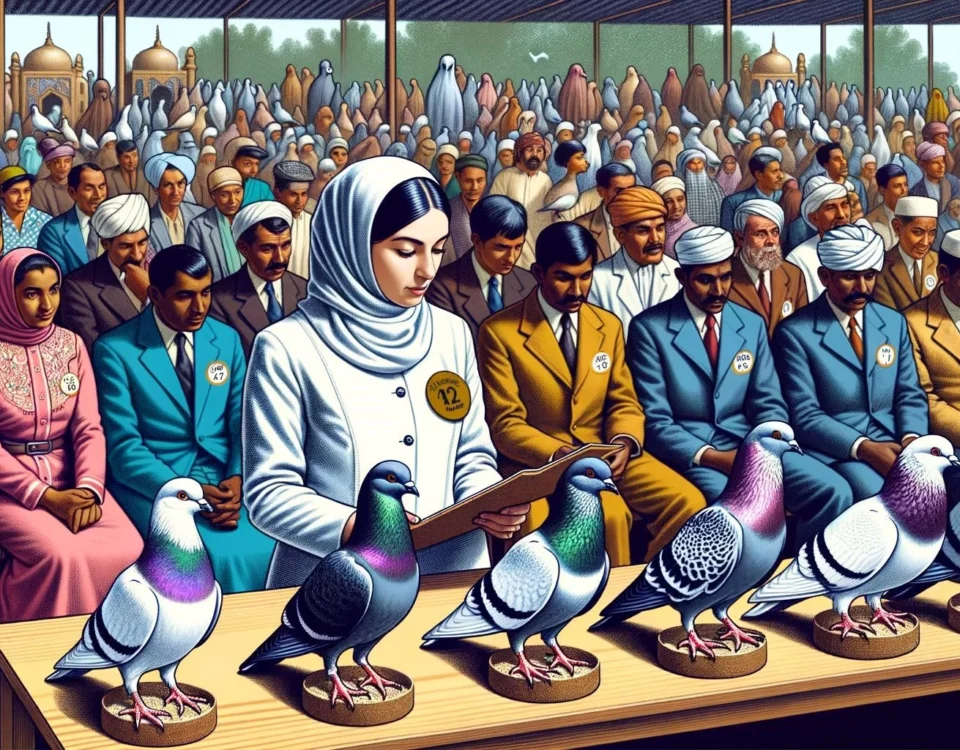Tumbler pigeons are domesticated pigeons that have been selectively bred for their ability to tumble or roll over backwards in flight. This unique behavior has been cultivated by pigeon fanciers for many centuries, leading to the development of distinct breeds with specific genetic traits. In recent years, there has been a growing interest in understanding the genetics behind tumbling behavior in pigeons and the mechanisms that contribute to this fascinating trait. In this article, we will explore the genetics of tumbler pigeons, including the heritability of tumbling behavior, the specific genes involved, and the implications for the breeding and development of these pigeons.
Key Takeaways
- Tumbler pigeons are domesticated pigeons bred for their ability to tumble or roll over backwards in flight.
- Tumbling behavior in tumbler pigeons is highly heritable, with a single gene allele being sufficient to cause a pigeon to tumble.
- Selective breeding has led to the development of specific breeds of tumbler pigeons with distinctive genetic traits.
- Research on the genetics of tumbler pigeons is still ongoing, and scientists are investigating the specific genes and molecular mechanisms involved in tumbling behavior.
Tumbling Behavior in Tumbler Pigeons: Heritability and Genetics
Tumbling behavior in tumbler pigeons is highly heritable, meaning that it is influenced by genetic factors. It has been observed that the ability to tumble is passed down from generation to generation, indicating a strong genetic component. Researchers have found that a single allele of a specific gene is enough to cause a pigeon to tumble. This suggests that tumbling behavior in tumbler pigeons is controlled by a single gene with a major effect.
However, the exact genetic mechanisms behind tumbling behavior in tumbler pigeons are still not fully understood. Scientists are currently conducting research to identify the specific genes and molecular pathways involved in this unique behavior. Some studies have focused on the serotonin system, as it has been found that pigeons given selective serotonin reuptake inhibitors (SSRIs), a type of antidepressant, exhibit tumbling behavior. This suggests that the serotonin pathway may play a role in regulating tumbling behavior in tumbler pigeons.
Selective Breeding and the Development of Tumbler Pigeon Breeds
The development of tumbler pigeon breeds has been a result of centuries of selective breeding by pigeon fanciers. Through careful selection of pigeons with desirable tumbling traits, breeders have been able to create distinct breeds with specific genetic characteristics. Different breeds of tumbler pigeons may exhibit variations in tumbling behavior, such as the frequency and duration of tumbles.
Selective breeding has also led to the development of other traits in tumbler pigeons, such as specific plumage colors and patterns. Pigeon fanciers have bred pigeons with diverse appearances, including various wing patterns and feather colors, adding to the aesthetic appeal of these birds.
Moreover, breeders have also considered health and overall quality when selecting pigeons for breeding. The careful attention to genetics and health ensures the production of high-quality offspring, as well as the preservation and improvement of tumbler pigeon breeds.
Implications for Breeding and Development of Tumbler Pigeons
Understanding the genetics of tumbling behavior and other traits in tumbler pigeons has practical implications for the breeding and development of these birds. By identifying the specific genes and molecular mechanisms involved in tumbling behavior, breeders can achieve more precise and targeted breeding programs.
Knowledge of the genetic basis of tumbling behavior can help breeders select pigeons with the desired genetic traits, leading to the production of offspring with a higher likelihood of exhibiting tumbling behavior. This can contribute to the preservation, improvement, and diversification of tumbler pigeon breeds.
In addition, understanding the genetics of tumbler pigeons can also have wider implications for the scientific study of bird behavior and evolution. By investigating the genetic basis of tumbling behavior in pigeons, researchers can gain insights into the genetic mechanisms that drive the development of complex behaviors in birds and other animals.
In conclusion, the genetics of tumbler pigeons play a crucial role in the development and expression of tumbling behavior. Tumbling behavior is highly heritable and controlled by specific genetic factors. Selective breeding has allowed pigeon fanciers to develop distinct breeds of tumbler pigeons with unique genetic traits. However, there is still ongoing research to fully uncover the specific genes and molecular pathways involved in tumbling behavior. Understanding the genetics of tumbler pigeons has practical implications for breeding programs and can contribute to our knowledge of behavioral genetics in birds.









